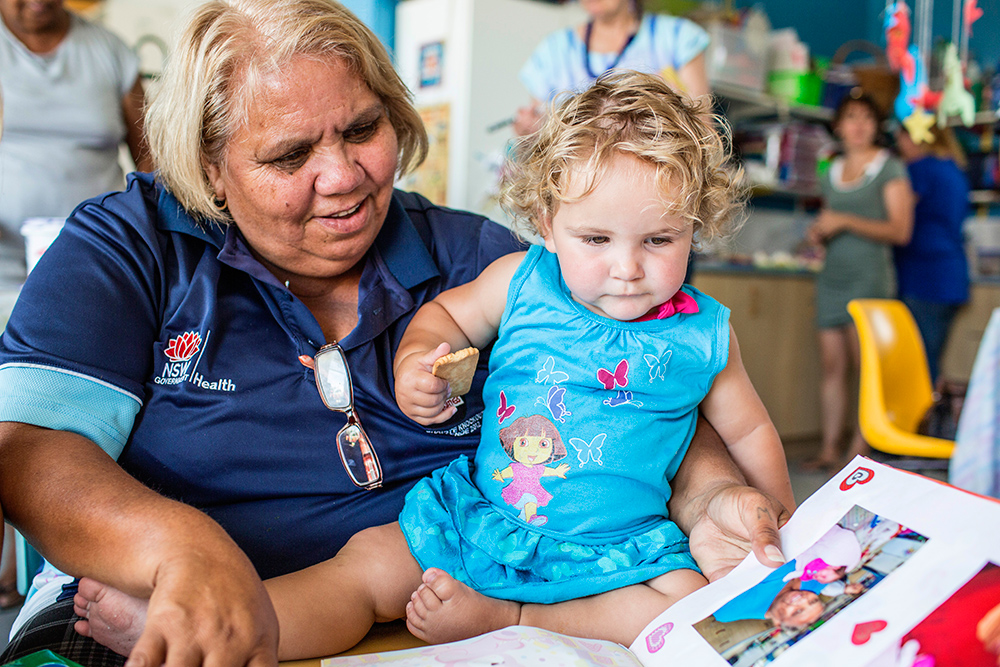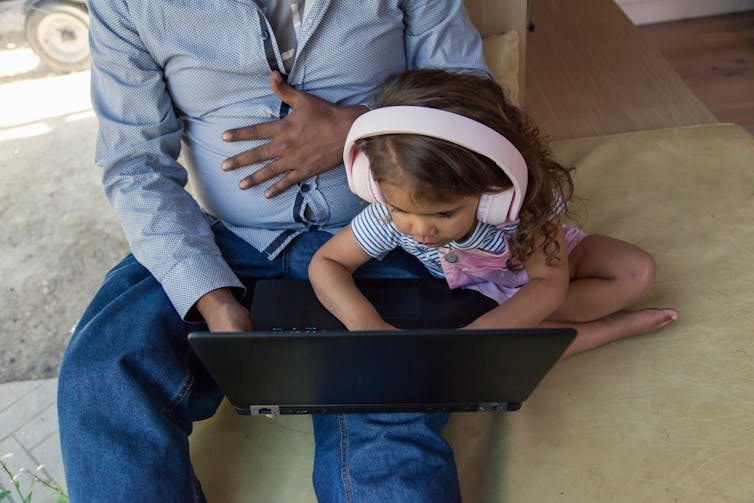
29 Jul How caring for children can help Aboriginal Elders during lockdown
Pandemic-induced lockdowns have provided stories of both hardship and resilience. This extends to families in the community caring for children in out-of-home care, a group which has weathered unique challenges as children are physically and sometimes virtually cut off from contact with their biological families.
A team of Aboriginal and non-Aboriginal researchers from the University of Sydney’s Research Centre for Children & Families have launched a new report which sheds light on these experiences and on some unexpected positives that emerged for Aboriginal communities in New South Wales.
The research was focused on organisations working with children placed in foster or relative Kinship care (where a child lives with extended family) across the state. And the researchers heard differing accounts of how carers were faring throughout 2020.
A standout message was that caring for children within Kinship networks kept older Aboriginal people connected during lockdowns, as summed up by one Aboriginal worker*:
The government’s telling everyone to isolate away from Elders. Ours was the complete opposite where our families join together. Family is the most important. Family is what keeps us together and keeps us going.
Added stress for carers and children in out-of-home care
In general, out-of-home care services painted a grim picture, with over 220 carers contacting the statewide carer support line throughout the year. Many of the state’s accredited out-of-home care service providers reported that carers were struggling to cope with the loss of children’s normal routines like school, therapy and visits with family members.
One organisation explained:
Overall stress levels appear higher for some carer families which has impacted the capacity to deal with existing complex issues.
Having already faced significant trauma and loss, children in out-of-home care need predictability even more than other children.
The uncertainty of COVID-19 often led to increased anxiety levels and emotional imbalance for children and left many foster carers stressed and in desperate need of time out from caring responsibilities.
In contrast, stories emerging from community services working with Aboriginal families in one part of the state suggested that caring for children protected Elders against social isolation during the lockdown.

Jodie Griggs/Getty Images
Community representatives explained that caring – both for children and for Elders – was a cultural obligation that was mutually beneficial. Kinship not only kept families connected across generations but eased the burden and stress on individuals. A community Elder reflected on this, saying:
I think it was a positive thing with our seniors having the kids because they thought – you know, it was going to be so overwhelming, but they got through it
Pandemic offering learning opportunities
Research shows that Aboriginal families were already doing it tough before the pandemic, with many of their Kinship carers live on the wrong side of the digital divide.
For some carers, there was no working computer at home and they were based outside big cities without reliable internet. Some older carers also have low technology literacy. These factors all had the potential to become critical barriers when the COVID-19 pandemic hit.
Judging from accounts shared with our Aboriginal research team, what happened for many Kinship carers was a far cry from this, as noted by this community worker:
They sort of went into [the lockdown] really nervous, but they’ve come out of it knowing new skills, being better with technology.
Our research showed that trusted, well-connected and localised services rallied to support their most vulnerable families during the lockdown, drawing on the strengths of Kinship networks and resilience in the face of enormous change.
An Aboriginal worker from one such service stated:
We were the only ones that were answering phones and being operational because of the stigma that was put on the COVID and going out.
In some cases, help took the form of delivering art supplies to Kinship carers of younger children or applying for financial aid to purchase a computer so children could learn from home. For others, it involved finding community members who could drive older carers to see doctors if they were not able to access e-health services.
As one community worker explained:
It was then coming up with creative ideas to keep in contact because we didn’t just want to shut the doors and lose those connections that we’ve built up over many years.
As New South Wales is enduring an extended lockdown and the latest COVID-19 outbreak spreads to other states such as Victoria, lessons from Aboriginal communities should be heeded to ensure lockdowns do not cause further harm to our most vulnerable children and families.
This applies not just to statutory out-of-home care services, but to health, education and other state and Commonwealth-funded services. Non-Aboriginal workers and their organisations have much to learn from the cultural protocols and strategies used by Aboriginal workers.
These show that what works is yarning together, doing whatever it takes to stay connected to families, and drawing on local knowledge and community strengths.![]()
Susan Collings, Research Fellow, University of Sydney; Irene Wardle, Aboriginal Educator and Research Associate, University of Sydney, and John Gilroy, ARC Research Fellow in Indigenous Health, Disability and Community Development, University of Sydney.
*Quotes in this research are from participants who cannot be named due to research ethics requirements.
Main Image: Three Rivers by Aunty Lorraine Brown and Aunty Narelle Thomas, from the Coomaditchie United Aboriginal Corporation. This artwork was commissioned by the Research Centre for Children and Families and the image represents the importance of keeping children in out-of-home care connected to Kinship and culture. Provided by author, Author provided (no reuse). This article is republished from The Conversation under a Creative Commons license. Read the original article.

